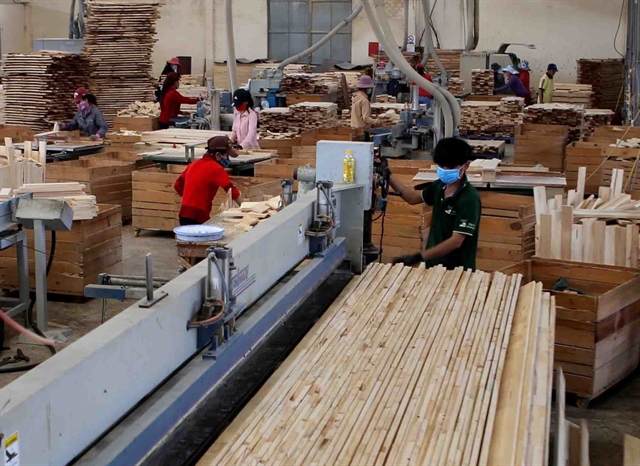
HÀ NỘI — The forestry sector has set a target of US$20 billionof annual export turnoverfor wood and wooden products by 2025, increasing from the current $9.45 billion.
According to the Forestry General Department, last year, localities nationwide produced more than 640 million seedlings.
Currently, 85 per cent of nation-wide forest area is up to sustainable forest management standards and has certificates of seedling origins.
Quality and quantity of wood had increased due to the high-quality seedlings.
Local forests meet 70 per cent of domestic production and export demand.
The forestry sector has set up project on sustainable wood and forestry- product processing and production, aiming to increase incomes for forest planters and create competitiveness in the market.
The sector has enhanced information exchange with professional associations and enterprises to understand the difficulties enterprises face when exporting forestry products.
In addition, afforestation for sustainable sources of timbers has been enhanced in recent years by local governments and businesses.
Co-operation among forest planters and enterprises has been expanded in many provinces such as Yên Bái, Tuyên Quang, Quảng Trị, Quảng Nam and Quảng Ninh.
Associations of forest planters with certificates have been established in Quảng Trị and Thừa Thiên – Huế provinces.
The move aims to promote the effectiveness of planting and managing forests in accordance with international standards and provide timber with certificates as well as increase profits for forest planters and processing businesses.
Existing difficulties
According to businesses, although local forests provide some 70 per cent of demand for domestic production and processing for export, sustainability was still an issue.
Many wood processing enterprises have been facing difficulties purchasing materials due to scarcity, as traders tend to buy and export woods as raw materials.
“The shortage was because many businesses did not have their own stable sources of timber,” said Đỗ Thị Bạch Hà, general director of Woodland Stock Company in Hà Nội.
“The enterprises should have co-operated closely with forest planters via contracts of financial provision and timber consumption,” Hà said.
To overcome the shortage of wood materials, businesses should promote value chain co-operation for forestry production, Hà suggested.
“Businesses should enhance linkages with growers with certificates of sustainable forest management,” she said.
While the obvious solution to the shortage of timber resources is planting more trees, experts say it is no easy fix.
Land for afforestation had been allocated to households who are mainly involved in small-scale production and unable to create larger areas of specialised wood materials with high productivity and good quality.
Restructuring State-owned forestry businesses who own large areas of forest but are ineffecient is seen as a solution and a way to lure investors into afforestation. — VNS

.jpg)




























